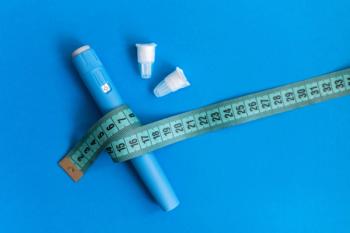
Lenacapavir Offers Promising Step Forward in HIV Prevention: Q&A With Onyema Ogbuagu, MBBCh, FACP, FIDSA
The approval of lenacapavir for use as pre-exposure prophylaxis is a significant step in reducing the incidence of HIV across the globe, including in areas where the PURPOSE trials were conducted.
The FDA approval of lenacapavir on June 19 offers a new treatment that can help to reduce the incidence of
What does the approval of lenacapavir mean for the future of preventing HIV?
If we had to dream up a world which would be ideal for HIV prevention, there's behavioral things you can do. There's other biomedical stuff, like condoms and male circumcision. But because those, sometimes put together or independently, haven't gotten us where we need to be reducing HIV infections, we had to dream of a world where we had therapeutics. It's playing out before our eyes in a beautiful manner. Now we have 2 oral options. Now we're going to have 2 injectable options. Everything has pros and cons, but I think at the minimum it adds to a strong repertoire of agents.
I think that even in the landscape of injectables, a subcutaneous injection compared to intramuscular injection may be a little less logistically challenging. I think that the the frequency of drug administration is a big one. For the current injectable, you have to get 7 injections a year if you're adding the loading dose where it's separate, a month apart. This one would be literally 2 shots a year. Is incredible, right? Those are strong properties of lenacapavir that I think would make it a desirable option beyond the efficacy and safety. But the fact that we can administer this just twice a year, it makes us start to reimagine what kind of populations that are underreached, or even who don't like taking orals, or just don't do orals as well, which we see in all the studies. It's a pitfall of oral therapy that lenacapavir can be a wonderful tool in that context to expand the promise of PrEP, maybe reach more populations that are currently underreached. I think it's it can only move the needle forward with regards to our success with HIV prevention as part of the overall goal of ending the HIV epidemic.
How do you think the results of the PURPOSE trials influenced the approval of the drug for general use?
The PURPOSE program was quite comprehensive relative to prior PrEP studies because I think at initial, when we design clinical trials, you want to make sure that they're representative of the diversity of participants who are at risk for HIV, and this includes by geography, by risk factor for HIV acquisition, by types of sexual intercourse, and even gender as well, because we included gender-diverse individuals. There was a robust program. Even in the PURPOSE 1 program, it included participants who got pregnant in the study, they could stay. That tends to be a forgotten population or later studied population for most studies. This allowed us generate data around the same time. The reason why I bring this up is that when we study the efficacy and safety of lenacapavir for HIV prevention, it was done in a really robust manner. That means that the results that we have now seen should be broadly applicable to a broad swath of people at risk for acquiring HIV.
PURPOSE 1 looked at cisgender women, and PURPOSE 2 looked at men with men who have sex with men, or bisexual men who have sex with men, or gende-diverse people as well. I think both of those showed very high efficacy. If you look at the PURPOSE 1 study, no participants on lenacapavir acquired HIV. Even in the PURPOSE study where I was a lead [principal investigator], only 2 participants out of 2100 and change acquired HIV. These are stunning, stunning numbers relative to what we call the background HIV incidence, so what would have been the HIV incidence in the absence of any intervention. But also we compared them to the oral therapy, and I think in general, injectables without prejudice to lenacapavir or cabotegravir, but I think injectables have generally shown superior efficacy to orals.
It's important to highlight that efficacy was so good that even on an interim analysis for PURPOSE 2 program that the differences were so stark, both studies were halted early. It's important to mention that they didn't even run their full course, because the results were so striking, it would have been unethical to leave people on what was now inferior oral standard of care in that context. Safety as well, like there were tons of injections received by participants in the study, and it was very well tolerated with extremely low discontinuation rate. On the bar of efficacy and safety, I think that the study results are very impressive, and I think is the reason why it is approved for use today,
How important is it that early findings show high adherence to lenacapavir in vulnerable populations? Is this a major area of attention as study findings continue to be reported?
The Achilles heel of the orals has been exactly what you mentioned. It's not just that adherence is poor, but we actually see it become poorer over time. With the adverse consequences of people acquiring HIV infection, it's what made TAF/FTC, even in the PURPOSE 1 program, not have greater efficacy than background HIV incidence, again, just driven by poor adherence. It's suggestive that the injectables are able to protect people who would otherwise not take their oral therapy. Now, what I've been saying is, in an era of orals, adherence is dependent on the individual to take their meds every day. In an era of injectables, especially because the injectables we have, including lenacapavir, will be in a nursing clinic—they're not going to be things that people would self-administer for now. Inherently, because clinics are administering these medications, it's kind of supported by the [practice]. Because you keep calendars when people should follow up, if they're going to miss an appointment, there's someone.
But I think the other things we need to factor in as we roll out lenacapavir [are], in general, there were great on-time injections. Over 90% in the studies. We do know that in the real world, sometimes on time injections can be lower than in clinical trials. I think an important message is that it's not just getting a first dose in but that we need, as in our PrEP programs, as we consider implementing lenacapavir, we need to make sure that we're also supporting people to make sure that they continue on time with their injections. We can learn from the experience with cabotegravir, that some sites have struggled with having people come in [for] on-time injections. If we take those lessons, that's why I talked about logistics. Here you're really talking about after giving the first dose, you're thinking about getting people in on time for their second dose. That's really twice a year to worry about that that as against doing that 6 times a year with the dosing frequency for the injectable agent.
This is better poised to allow us to be more successful in making sure that we can give on-time injections, given that the burden of doing so is really, really minimal, and I think that that can only help with implementing the lenacapavir. As you do know, there is some early data about even longer-acting forms of lenacapavir, so I consider this like a lead-in approach twice yearly, and there's always a chance that 3, 4 years down the road, maybe it'd even be less frequent. Again, all moving in the right direction.
Are there any adverse effects of lenacapavir that should be considered by clinicians and patients?
I think injection site reactions are a new thing we deal with when we think about injectables in general, vis a vis oral therapy. We should prepare our patients. Lenacapavir forms under the skin, so they can feel sometimes a bubble, and it's usually not painful or even visible if it's done right. But I think we need to prepare patients for this. Because most people who get those injections will feel something, either pain or experience redness, swelling or something at the site, they tend to be mild to moderate. I think as centers accrue more experience doing it, as participants get more accustomed to what those injection site reactions are, they tend to do okay with it. It tends not to be the major issue around people discontinuing therapy. I think that's where we can do to just good clinical practice and managing and mitigating injection-site reactions. We can make the experience as tolerable as possible for individuals.
How do you think the ongoing PURPOSE 3, 4, and 5 trials can inform this FDA approval in the future?
I think the breadth of the program is super remarkable. There's also a PURPOSE 5, which is a demonstration project for men who have sex with men in Europe or so.1 The PURPOSE 1 study was done in young women, adolescent girls, and young women in sub-Saharan Africa. People could say maybe cisgender women in more wealthy countries or minority women in more wealthy countries face different barriers to engagement and being in care. Maybe not as high in HIV incidence. You can't top the HIV incidence where the study was done in PURPOSE 1, but at least [PURPOSE 3] gives a different flavor of women who face also different challenges. Now, we don't expect any differences with biology or gender. It's really more about making sure that we're showing the value of lenacapavir in different groups in different geographies, reflective of different challenges with being engaged in HIV prevention. That's what the PURPOSE 3 trial is trying to do.
People who inject drugs, to be honest, are a hard group to study when it comes to PrEP, because people who inject drugs could also be at risk for HIV by sex. It's hard to know which is which. We do know that in our programs, we had, for example, about 20% or so, at least in PURPOSE 2 program who engage in chem sex. Chem sex is a much more broader thing, it's not injectables. But I won't be surprised if there's some minority of people who are at sexual risk for HIV, but also at risk right through injection drug use or injectable substances. This would not be an efficacy trial, but this would just be showing the safety [and] tolerability. I think, even more important is that people who use substances may face challenges with being engaged in care and retained or persist on PrEP. Even beyond efficacy assessments, I think even showing that lenacapavir can be a viable option for people who have significant comorbid disorders that we know can interfere with going on PrEP, staying on PrEP, I think that's another value that those kind of studies can definitely show. We're looking forward to some of those when they are available.
Can you give an idea to when an average American clinician could start prescribing this treatment to their patients?
I can imagine that after approval the company will need to ramp up production. I know there are voluntary licenses to meet some demand abroad for low- and middle-income countries—I think 6 of such licenses. I think that has been published by Jared Baeton, [MD, PhD, senior vice president of clinical development and virology at Gilead Sciences]. He's published about Gilead's commitment to ensuring access, but that's not the US.
I think, and rightfully so, we are all advocating that cost would be a primary driver of how insurers respond to this if programs can afford it. What we've learned from other injectable PrEP like cabotegravir is that the 2 pathways generally are that hospitals can buy and bill, so they buy the product and bill when it's administered, or you wait for insurance authorization and then you get the medication. Both of those could be fraught with risks and challenges that may not be too different for lenacapavir, but I would imagine that pricing would play a huge role in people being willing to use that. We're all advocating, and we'll see where that falls.
The rest of the conversation about what the cost could be and access? I think it's beyond my pay grade. I think that some states have drug assistance programs for PrEP, and again, I think that we just have to see how those play out with individuals making it available. I think that lenacapavir has shown a lot of promise. A twice-yearly injection can make us totally reimagine the kind of people we can get on PrEP, including people who may think intramuscular injection is too frequent for them [and] those who don't really like orals. But the huge driver of the uptake would also be its affordability and access, as you can imagine.
Footnote
1. According to
Newsletter
Stay ahead of policy, cost, and value—subscribe to AJMC for expert insights at the intersection of clinical care and health economics.













































